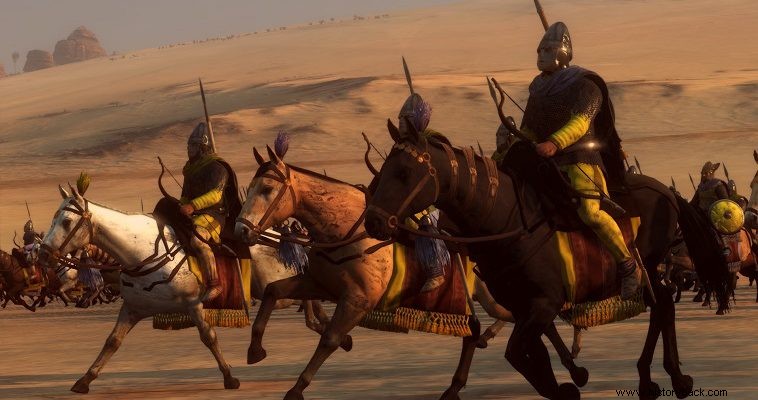
According to the Emperor Mauritius, the "Persian nation is vicious and hideous and servile... They are suffering and the wars in favor of the country are there." The Sassanid Persians were the most persistent and the best opponent of Byzantium, from the 4th century AD. until the destruction of their state by the Arabs in the 7th century.
Their army consisted of cavalry, infantry and war elephants. There was no standing regular army, other than the divisions of the royal guard. In case of war, the king ordered his satraps to mobilize the fighting men of their province. Many such detachments constituted an army.
The Persians had the advantage of numerical superiority against the Byzantines, since they were able to gather all their forces against their opponents, since they were not threatened by any other nation, until the appearance of the Arabs. On the contrary, during the same period of the wars with the Persians, the Byzantines were also obliged to fight against other enemies in the West, or in the northern Balkans.
The Persians lined up for battle, usually in two lines, each of which was divided into right, left and center. The depth, in evens, of the sections that made up each line was not predetermined and depended on the tactical situation. The main judging instrument of the fight was the cavalry. It was distinguished into super heavy, heavy and light.
The heavy cavalry, the Barriers, were in very close order and acted as a moving wall, ready to sweep away anything in front of them. The Persian Kataphractes were equipped with long spears, at least 3 meters long, and swords. They wore heavy chain mail, covering them from head to ankles, and they also rode heavily armored horses. The Byzantine cavalry was unable to withstand their frontal attack and to deal with them it utilized its greater agility and flexibility and the combination of weapons.
The Persian Barriers, due to the weight of their equipment and their horses, moved rather slowly. Thus the Byzantine horsemen were able to approach them, shoot them from a short distance and safely move away. The bulk of the Persian cavalry, however, consisted of the furnace-bearers. The furnace-bearers carried weapons similar to those of the Byzantine buccalarians, i.e. lances, bows and swords.
They were trained to fire rapid volleys of arrows and charge at their opponent as soon as the latter showed signs of disorganization and disorder. However, the large volume of fire did not ensure accuracy. Against them, the Byzantine horsemen launched much slower volleys of arrows. And the powerful compound bows they possessed launched the arrow with such momentum that it was able to penetrate the chained chest of the Persians.
The Persians also had compound bows but they were "used to the short bow, but not strong". The horses of the Persian furnacemen were also half-armoured. The third type of horsemen, the light horsemen, did not wear armour. They were armed with bow, swords, javelin and small shield. These men posed no real threat to the Byzantines. They were not trained to fight from the cluster and immediately fled when they received the attack of the Byzantine Cursors, who fought in an acrobolism formation.
The great tragedy for the Persians was the lack of appreciable infantry. Their satellites were completely untrained and whenever they achieved anything positive it was due to their sheer numbers. Before the battle at Daras, Belisarius, speaking to his men about the Persian infantry, said to them:"His infantry is all but a group of suffering peasants, who are useful only in sieges, in dogging the dead and serving others." soldiers - the horsemen".
There were also some units of irregular mountain light infantry, who fought as peltasts. Finally there were bodies of small slingers and archers. All of these were unable to cause serious disturbance to the Byzantine infantry. As in the Median Wars (490-479 BC). the Persian infantry is crushed by the enemy.
At Daras, says Procopius, the Byzantines slaughtered the Persian infantry in a short time and with a minimum of effort! However, a weapon that the Persians possessed seemed extremely formidable for the Byzantine Army and especially for the Byzantine cavalry. They were none other than war elephants. The elephants terrorized the horses of the opponents and spread panic.
On their backs they carried canopies inside which were two or three warriors, armed with spears and bows. Against these pachyderms the Byzantines threw their elite light infantry. The purpose was not necessarily to kill the animal, but to wound it, frighten it, and force it to turn towards the friendly lines, breaking them up and causing them disorder.
